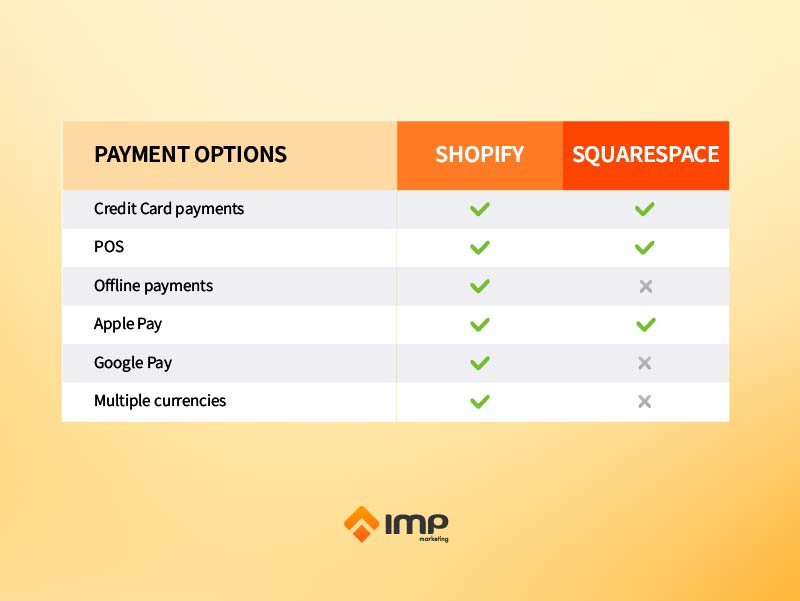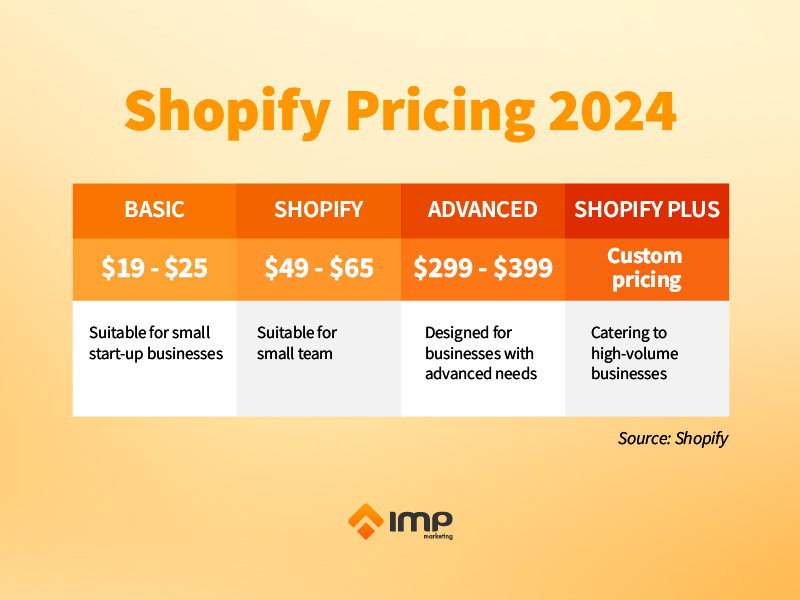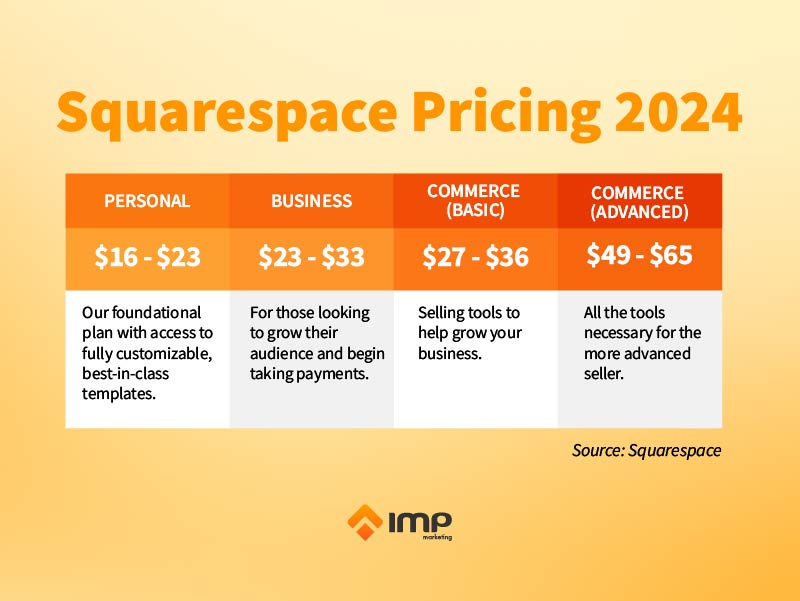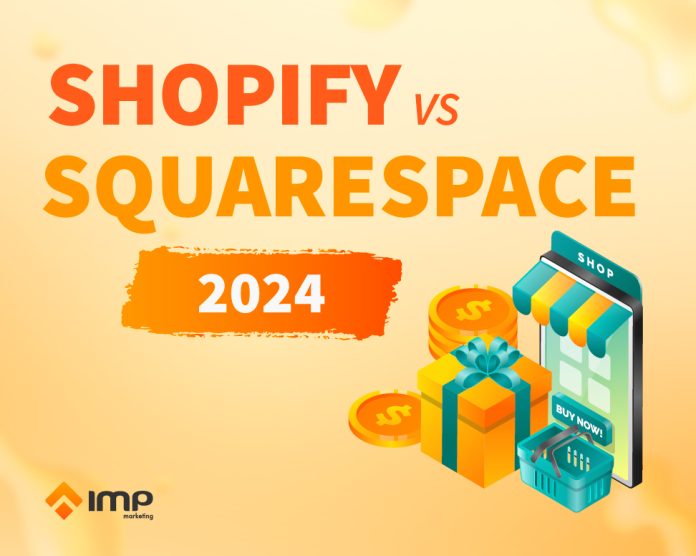Choosing the right platform to boost your online business success can be a daunting task, especially as there are many options, from full-scale e-commerce solutions to user-friendly website builders. This article, therefore, compares the two platforms across essential criteria, giving you the insight to make a confident decision based on your unique needs.
Let’s delve into each category for a thorough analysis and discover which platform comes out on top in the Shopify vs. Squarespace showdown!
Key features
Marketing
- SEO
Shopify and Squarespace both provide robust SEO features, but they approach it differently.
Shopify
Shopify is set up to align with Google’s Core Web Vitals requirements, prioritizing page loading time, responsiveness, and visual stability. To expedite the SEO process, Shopify analyzes page content and suggests titles and meta descriptions, thereby saving users valuable time.
Moreover, Shopify integrates best practice prompts and built-in marketing tools to optimize SEO efforts. Collectively, these features ensure that Shopify users have the tools and resources necessary to enhance their website’s visibility and performance on search engines.
Squarespace
Squarespace offers users control over essential SEO elements such as meta titles, descriptions, and custom URLs, empowering them to optimize their website’s search engine.
While Google Analytics is included with all plans, certain older Squarespace templates may pose limitations, hindering users from customizing page titles. To address this issue, Squarespace users can leverage third-party solutions like the SEOSpace plugin, which provides additional SEO tools and functionalities.
- Blogging
Shopify
Even though Shopify offers a built-in blogging feature, that is not its primary focus. Users can create and manage blog posts directly within the Shopify platform without additional apps.
However, Shopify’s blogging capabilities are relatively basic compared to its e-commerce functionalities. It lacks advanced features such as blog statistics, social bookmarking, and robust categorization options, making it less suitable for individuals who prioritize content creation.
Squarespace

Squarespace shines with its versatile blogging features. Give its dedicated blog page, Squarespace provides extensive tools and features for crafting compelling blog content. This allows users to easily create blog articles, utilize extracts, tag and categorize posts effectively, enable comments for interaction, and seamlessly share content across popular social media platforms.
Overall, Squarespace offers a comprehensive blogging solution that caters to the needs of content-focused individuals and businesses, making it a preferred choice for those prioritizing robust blogging capabilities.
- Email Campaigns
Shopify
Shopify offers seamless integration with email marketing solutions in the Shopify app store. One standout feature of Shopify Email is its pricing. You can send emails to up to 10,000 subscribers per month for free, with a $1 monthly fee for every additional 1,000 subscribers you reach. Unlike Squarespace, Shopify does not impose monthly fees for using the service.
Additionally, Shopify provides diverse templates that are tailored to complement your site’s design and cater to special holidays or events.
Squarespace
Integrating a third-party email marketing tool with Squarespace forms requires using Zapier to establish a connection between the app and your Squarespace site. However, this process may attract additional costs and setup time.
- Social Media integration
Shopify
Shopify enables you to expand your sales reach to various marketplaces and sales channels such as Facebook, TikTok, Pinterest, Amazon, eBay, and even Spotify — without installing additional integrations or apps.
Squarespace
Currently, Squarespace only gives you access to Instagram. The platform integrates with Amazon only for tracking purposes; you can’t sell there directly from your Squarespace store.
Sale
Shopify
Shopify enables users to seamlessly expand their sales reach across multiple marketplaces and channels. Through Shopify, sellers can effortlessly tap into platforms like Facebook, Google, Pinterest, TikTok, and Instagram, broadening their audience and boosting sales and brand visibility without additional integrations.
Moreover, Shopify’s extensive app marketplace offers many specialized sales and marketing tools, including pop-up ads, spin-to-win widgets, reviews and loyalty programs, and robust fulfillment and inventory management solutions, enhancing the overall e-commerce experience.
Squarespace
As for Squarespace, its sales tools are more restricted in functionality. While it integrates with Amazon for tracking purposes, direct selling on Amazon from Squarespace is not supported.
Squarespace’s commerce platform facilitates businesses in positioning themselves for sales across various platforms. It even allows for the direct import of products from an Etsy store, but, unlike Shopify, it just doesn’t have the same native functionality for actually reaching those platforms.
Design
Shopify
Shopify offers a selection of themes, providing users with ten free templates or over 50 premium templates ranging from $140 to $180. These themes cater to various industries, from electrical gadgets to clothing, sports, and cosmetics. However, some Shopify themes lack navigation bars that scroll down, which can be cumbersome to address.

Squarespace
Squarespace holds an advantage with its sleek and modern templates. Each Squarespace template conveys a clear message and features easily identifiable key action buttons, enhancing user experience. While Squarespace offers themes tailored specifically for the creative industry, it also covers many other industries, including DIY, food and drink, and toys.
However, Squarespace lacks the extensive customization options that Shopify provides through code, making it less suitable for users who require advanced customization capabilities.

Although adding products is similar on both platforms, Squarespace’s product displays are much more visually appealing than Shopify’s. Also, Squarespace allows you to create detailed product pages that include features like zoom or lightbox functions for photos. Additionally, you can upload 360° turntable images, allowing users to rotate and examine products from every angle.
Payment options
Shopify and Squarespace both offer a variety of payment options. However, Squarespace provides fewer options compared to Shopify.

Customer support
Shopify
Shopify offers robust customer support features to assist merchants at every stage of their e-commerce journey. The platform provides 24/7 customer support via live chat, email, and phone, making it possible for merchants to receive assistance whenever needed.
Additionally, Shopify’s extensive Help Center offers many resources, including articles, tutorials, and guides, to help merchants troubleshoot issues and learn more about using the platform effectively.
Dedicated account managers can provide personalized support and guidance for merchants on higher-tier plans like Shopify Plus. Furthermore, Shopify’s active community forums enable merchants to connect with peers, share insights, and seek advice on various e-commerce topics.
Squarespace
Squarespace also offers 24/7 support, although it is exclusively available via email. Help Center contains many articles, tutorials, videos, and step-by-step guides covering various aspects of building and managing a website or online store with Squarespace.
Moreover, Squarespace regularly hosts live and on-demand video workshops to help users learn more about using the platform effectively. These workshops cover website design, e-commerce strategies, SEO optimization, and more. Users can attend live sessions to interact with Squarespace experts or watch recorded workshops at their convenience.
Pricing
Consult the pricing details of each platform from the images provided below. Note that theseprices are current as at the time of writing. For precise and detailed pricing information, you may directly refer to both platforms.


Summarizer
| Features | Shopify | Squarespace |
| Drag-and-drop store builder | ✅ | ✅ |
| Custom online store | ✅ | ✅ |
| Product presentation | ❌ | ✅ |
| Blog CMS capabilities | ❌ | ✅ |
| Offered payment options | ✅ | ❌ |
| Shipping cost & Carrier integration | ❌ | ✅ |
| Tax settings & Calculations | ✅ | ❌ |
| SEO & Page speed | ✅ | ✅ |
| Marketing features | ✅ | ✅ |
| Sales channels | Facebook, Instagram, Pinterest, Google, Amazon, and more | Facebook, Instagram, Google Shopping, and YouTube |
| Sell subscriptions | with Shopify apps | ❌ |
| Transaction fees | 0% with Shopify Payments | 0% on Commerce Plan |
| Fraud analysis | ✅ | ❌ |
| App Store | over 6,000 apps | over 20 extensions |
| Responsive website themes | over 70 free and paid themes | over 100 free templates |
| Dropshipping | ✅ | ❌ |
| POS (Point of Sale) | with Shopify POS | with Square (US Only) |
| Multilingual stores | ✅ | ❌ |
| Secure payment gateways | over 100 | 3 |
| Support | ✅ | ✅ |
| Pricing | $19,00/month to $3,588 USD/month | $16 to $65 |
After analyzing the comparison table, it’s obvious that Shopify emerges as the superior option, with a comprehensive array of features tailored to meet the diverse needs of e-commerce businesses.
Which is better for your e-commerce store?
When considering apps and features, both platforms provide ample offerings. So, which one is the ultimate choice for your e-commerce venture? Well, it hinges on your unique requirements and objectives.

If your priority is e-commerce and you seek a platform rich in business tools and selling features, Shopify is the way to go. Conversely, if aesthetics outweigh functionality and your focus lies in content marketing and blogging, Squarespace could be preferable.
Conclusion
From the comparison, it’s been established that both platforms have evolved to cater to diverse needs. While Shopify focuses on e-commerce prowess, Squarespace emphasizes on user-friendly website design. Businesses should, therefore, carefully evaluate their specific needs, budget constraints, technical capabilities, and long-term goals to determine which platform aligns best with their e-commerce aspirations in 2024.










